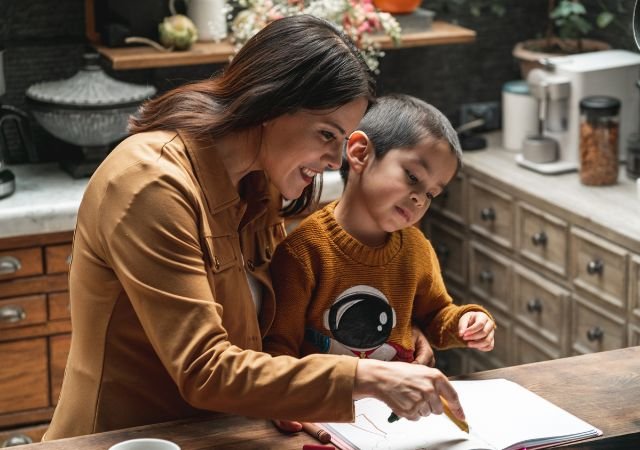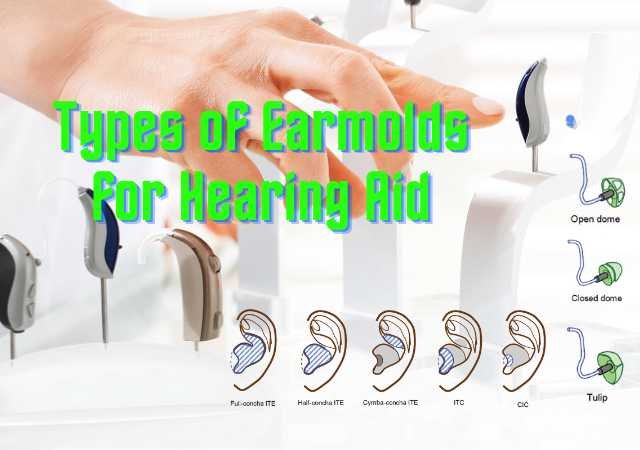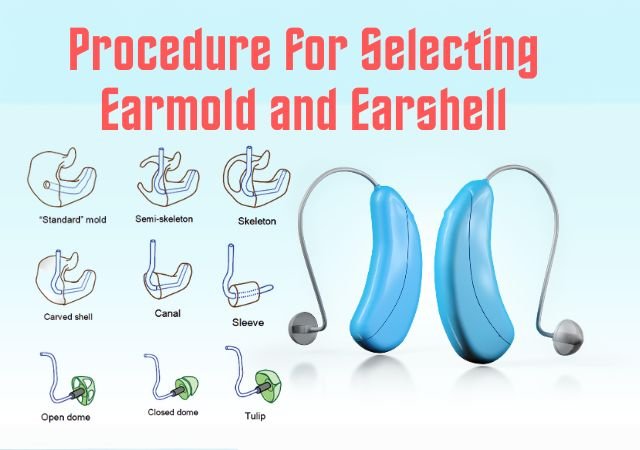Ear Impression Techniques for Earmolds and Earshells: One such critical process in audiology and hearing aid fabrication is the Ear Impression Technique — a delicate balance of precision and meticulousness. This approach begins by analyzing the ear canal using otoscopic instruments and observes that abnormalities and cerumen should be recorded. The next steps are a very delicate and well sequenced choreography, where a canal block will be introduced, followed by the impression material, thorough mixing, and finally filling the ear absolutely methodically.
With details about marking, curing time, and the painstaking removal of the actual work, ending with inspection, notating, and shipping (or transmitting digitally), this thorough guide takes the reader by the hand. This story highlights how it is of the utmost importance to be detail-oriented and follow all best practices/protocols during this unique procedure. This article details the artistry behind the Ear Impression Technique, from inspecting the ear canal, to the delicate components of the impression material mixing and application process, service of the Ear Impression Technique, which forms the basis for custom hearing aid solutions crafted to the specific assets of each person.
Ear Impression Technique
The ear impression technique: a complex method of ear sculpting. Materials also play crucial role in making the ear imprint types, but it depends on the Types of Earmold or Earshell. The procedure starts with a careful inspection of the ear canal with otoscopic instruments. Step one is to recognize abnormalities & cerumen levels to begin with. The next steps include placing a canal block to control the flow of impression material, mixing the material to the right consistency, and taking care to fill the ear. From marking through waiting for sufficient cure to gentle removal—and finally inspection, annotation, and appropriate provisions to prepare for shipping or digital transmission, this in-depth guide details everything you need to know. The following is based on a multidisciplinary approach to a septic patient, critical for this specialized procedure, with an eye for detail and following learned protocols.
Step 1: Examine the ear canal
The process of ear impression starts with the osctoscopic examination. Before taking the impression, try to retract the pinna so that you have a direct view of the eardrum and canal walls to check for abnormalities.
- Significant amounts of cerumen may have negative consequences on the accuracy of the ear impression, do not continue. Depending on the precision required, cerumen/tolerance may be less or more. For example, a low gain, vented, BTE earmold or full concha ITE hearing aid may withstand more cerumen than a high gain occluded aid or a CIC.
- If there are any visible signs of outer or middle ear infection or inflammation do not proceed, if the eardrum is distended or perforated do not proceed. If so, medical clearance must be obtained prior to proceeding.
- Be careful with the deep impression, though, if the ear canal widens a lot it can make extraction difficult. Ear canals may slightly widen anterior-posteriorly (in the A-P dimension) just medial (in the M-L dimension) to the second bend. Some extreme cases that need ENT clearance before taking an impression, are post-mastoidectomy. In these scenarios, extra blocks are utilized to fill the surgically formed cavity before isolating the block that shields the eardrum.
- Cut long hairs in the concha with shears to prevent distortion or difficulties removing the impression.
Step 2: Insert a canal block
A canal block, oto-block, impression pad or eardam is a small wad of cotton wool or foam inserted into the cross-section of the ear canal. Its role, is to stop excessive flow of impression material into the canal. The flow-resistant block enables impression material to evenly fill a canal cross-section to the desired length, preventing uneven tapering. The strongest of the thread is knotted around the block where it is handremovable, which is usually only done in the case of removing the block without an impression.
Alternatively, the cotton or foam can be affixed to a tube. Canal blocks are available in various sizes with pre-tied thread, and choosing the correct size is crucial. Blocks that are too small might be pushed down by the impression material, while overly large blocks may not insert far enough and can be uncomfortable. Special blocks with reduced thickness in the medial-lateral dimension are designed for deep canal impressions.
Inserting the block is conveniently done with an illuminated plastic stick, often referred to as an earlight, oto-light, or light-stick. It’s essential to brace your little finger against the side of the head when using the earlight. If inserting the cotton block suddenly becomes easier, caution is advised, as the canal may widen unexpectedly, making impression removal challenging.
The depth of insertion for the canal block is crucial. While earmold or aid manufacturers can create the finished device with a canal stalk shorter than the impression, they cannot extend it. It is recommended to err on the longer side when determining the needed length. Ideally, the block should be at or beyond the second bend, unless a very short canal stalk is specifically required for the finished device. If a shorter earmold or shell is desired, the desired length can be marked on the impression.
Step 3: Mix the Impression Material
Utilize the exact ratios for the components. Changing the blend could change its viscosity and make it more liquid for serializing easier, for instance a more progress tour plan. However, these changes may adversely affect how we perceive an ending. For example, it being too liquid in a liquid/powder acrylic mixture can result in the impression melting or deforming at a lower temperature and increase shrinkage.
Throughout and rapid mixing is very important. Use spatula (on a disposable pad, or the surface area as easily cleanable). The reasons for this precautionary step include:
- Potential health effects for the clinician due to repeating skin contact with impression chemicals.
- There is a case where the impression material gets contaminated with sulfur based products, which can leach from the hand lotions and latex gloves.
- Temperature of impression material is raised since setting time is reduced with rising temperature.
In parallel, the same occurs to the impression material, which can be positioned into the syringe by means of the spatula, or by tilting the collected and replaced syringe in the opposite direction, clockwise around the mixing pad.
Step 4: Fill the Ear
- Partially depress the syringe or gun until material begins to flow from the tip.
- Lift and pull back the pinna to allow the syringe to be inserted as deeply as possible.
- Use syringe extension tips for long and narrow canals.
- Depress the syringe until the material covers the tip to a depth of approximately 6 mm (0.25 inches).
- Continue depressing the syringe plunger while simultaneously withdrawing the syringe tip to maintain a consistent depth.
- Once the canal is filled and the concha is nearly filled, lower the plunger end and move the syringe tip along the back of the concha towards the helix.
- Fill the cymbal-concha, then raise the plunger end and move the syringe tip down the front part of the cavum-concha near the tragus.
- Complete the syringing process when the concha is fully filled and slightly overflowing on all sides.
- The earmold/earshell laboratory needs to recognize ear landmarks, achievable by over-filling the concha.
- Ensure a continuous motion with constant pressure on the syringe for the entire operation.
- Finish with a nearly flat external surface for easy gluing of the impression to a container for potential shipping needs.
Step 5: Mark the Impression
If the hearing aid is ITE or ITC type and has directional, write a horizontal line on the surface of the impression. This marking will assist the manufacturer in already getting both ports on the same horizontal plane to maximize frontal directivity.
Step 6: Wait
Evaluate the hardness of the impression after 7 to 10 minutes, varying with the impression material and temperature. Use a fingernail or another sharp object to briefly indent the impression. If the indent completely disappears, the impression is adequately cured. In case of intricate or lengthy canals, extend the waiting time slightly beyond the usual duration to minimize the risk of tearing during extraction.
Step 7: Remove the Impression and Inspect the Ear
Ask the patient to move his / her jaw a few times and to correct the pinna downwards, described and upwards. These actions are to relax the coupling between the impression of the ear and the ear. Break out the helix part of the impression, called the helix lock. Getting Hold of the Impression: Get a good hold of the impression and it should be twisted firmly but gently and out. Kneel down and examine the ear closely and ensure that not a hint is left behind.
Step 8: Inspect the Impression

Make sure that there are no creases, gaps, or air pockets. Whereas flaws in some areas that will be ultimately cut out of the finished product are perfectly fine, they should not exist in other areas. It is very important where you have the canal stalk, and if you doubt it, make the second impression. Leave the canal block attached to the impression. Its orientation gives the manufacturer cues to the canal’s path towards the impression material’s end. Don’t be afraid to take another shot if necessary.
Step 9: Annotate and send the impression
By this time you should have the final impression ready to be shipped. Any distortion that might happen during transport can also be repeated in the final product. Or use a laser scanner to digitally capture the impression and forward the scanned image to the manufacturer electronically. Irrespective of the method used, annotations should be made that shall include notes of any abnormalities of the ear canal that were observed or specific requests regarding a desired otoplastic variation from the impressionに. If any indentations appear in the impression from the bumps in the ear, then this should be highlighted as high lighting the elements will lead the technician to assume that they are due to incorrect impression technique and proceed to fill them. If the aural canal shows significant motion with jaw excursion, outline the mobile area unless the impression was made with the jaw in a state of abduction.
Step 10: Clean up
While good infection control practices should be employed, including the nature of the risk and type of control measures is beyond the scope of this book. Cerumen is not infective in nature, but seeing blood or other fluids in the wax is not a great assertion. Therefore, any cerumen should be presumed infectious. In rare cases, if there are apparent ear infections or a procedure causes bleeding into your ear canal, extreme care and thorough disinfection (or disposal) of your equipment must be performed.
Additional CIC Hearing Aid Impression Technique
1. Extend the impression 5 mm beyond the second bend.
2. Choose a silicone impression material with medium-to-high viscosity, such as Otoform A/K, Westone, Silicast, Steramold, Otosil, or Dahlberg.
3. Utilize an open-jaw technique for the impression.
Ear Impression Materials
Ear impressions involve the use of at least three different materials, each requiring a chemical reaction to set when two components are mixed:
- Acrylic material (e.g., ethyl-methacrylate) involves combining a liquid and a powder, as seen in Audalin™.
- Condensation-cured silicone material (e.g., dimethyl-siloxane) requires the mixing of two pastes. Examples include Otoform-K™, Siliclone™, Blue Silicast™, and Micro-sil™.
- Addition-cured silicone material (e.g., polyvinylsiloxane, vinyl-polysiloxane) involves combining two pastes. Examples in this category are Otoform A/K™, Reprosil™, Pink Silicast™, Silasoft™, Mega-Sil™, Dur-a-sil Equal™, Matrics™, and Silhouette Plus™.
For ear impressions to result in a well-fitting yet comfortable earmold or earshell, the materials used must possess specific combinations of properties.
Conclusion
Overall, ear impression technique is a careful, stepwise process that requires strict attention to detail. The first step in obtaining a great impression is the otoscopy, addressing abnormalities present in the ear canal and ensuring successful amounts of cerumen in the ear canal. This canal block placement is the most critical step wherein the material will not leak out of the ear canal and help the canal get filled evenly. Subsequent steps including careful mixing of the impression material and filling and marking the impression all play a role in the success of the procedure.
Remember the article is up to date until October 2023. Then inspection and marking for shipping the impressions or sending them electronically, and showing the clear need for a smooth and accurate impression of the ear. Importantly, this detailed guide highlights the technical complexity of the ear impression technique and its role in obtaining properly fitting and comfortable earmoulds or earshells in hearing aid users.
FAQs about Ear Impression Techniques for Earmolds and Earshells
1. Why is it important to examine the ear canal before proceeding with the ear impression technique?
The inspection of the ear canal is important to check for abnormalities, cerumen, or infection. Thus ensuring impressions are accurate, avoiding complications whilst providing the process. It is important to avoid proceeding in cerumen or infections in order to maintain precision.
2. What precautions should be taken when inserting a canal block during the ear impression process?
The size of the canal block is also crucial; they should be no-flow canal blocks. If insertion suddenly becomes much easier, it is possible the canal has widened unexpectedly, and so proceed with care. Insertion depth is critical, and blocks should extend to or beyond the second bend if at all possible. For deep canal impressions, the use of special blocks is recommended; in post-mastoidectomy cases caution should be exercised.
3. Why is the correct mixing of impression material crucial, and what precautions should be taken during this step?
Also, a correct mixing is really necessary for the viscosity and setting time of the impression material. Altering the mix could leave the final impression somewhat ruined! Risks are greatly mitigated by following recommended proportions rigorously, ensuring that nothing sulphur-based contaminates the mix and preventing overheating of the material during mixing.
4. How should the ear be filled during the ear impression process, and why is it important to mark the impression for certain hearing aids?
The ear must be filled with a syringe and constant movement in the same pressure is required for uniform filling. Specifically, the quality of the impression being made is critical for ITE or ITC hearing aids with directional microphones, as these types of devices benefit from having ports mounted on a shared horizontal axis in order to maximize their frontal directivity.
5. What steps should be taken after removing the ear impression, and how should the finalized impression be prepared for shipping or digital transmission?
Inspect the ear for residue and the impression for defects after it is removed. Secure the final impression for shipping; alternatively, use a laser scanner to send digitally. Bring it home by annotating any deviations and making specific requests. In such cases, cleaning up entails thorough measures of infection control, especially when there is bleeding or visible ear infection at the time of procedure.
References:
- Hearing Aids – Harvey Dillon (Book)
- Essentials of Audiology – Stanley A. Gelfand, PhD (Book)







Thanks for sending audio materials too I is very needfull